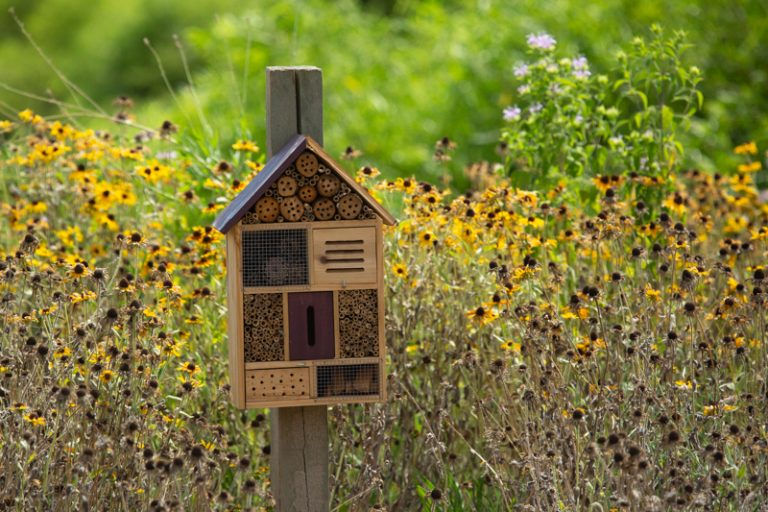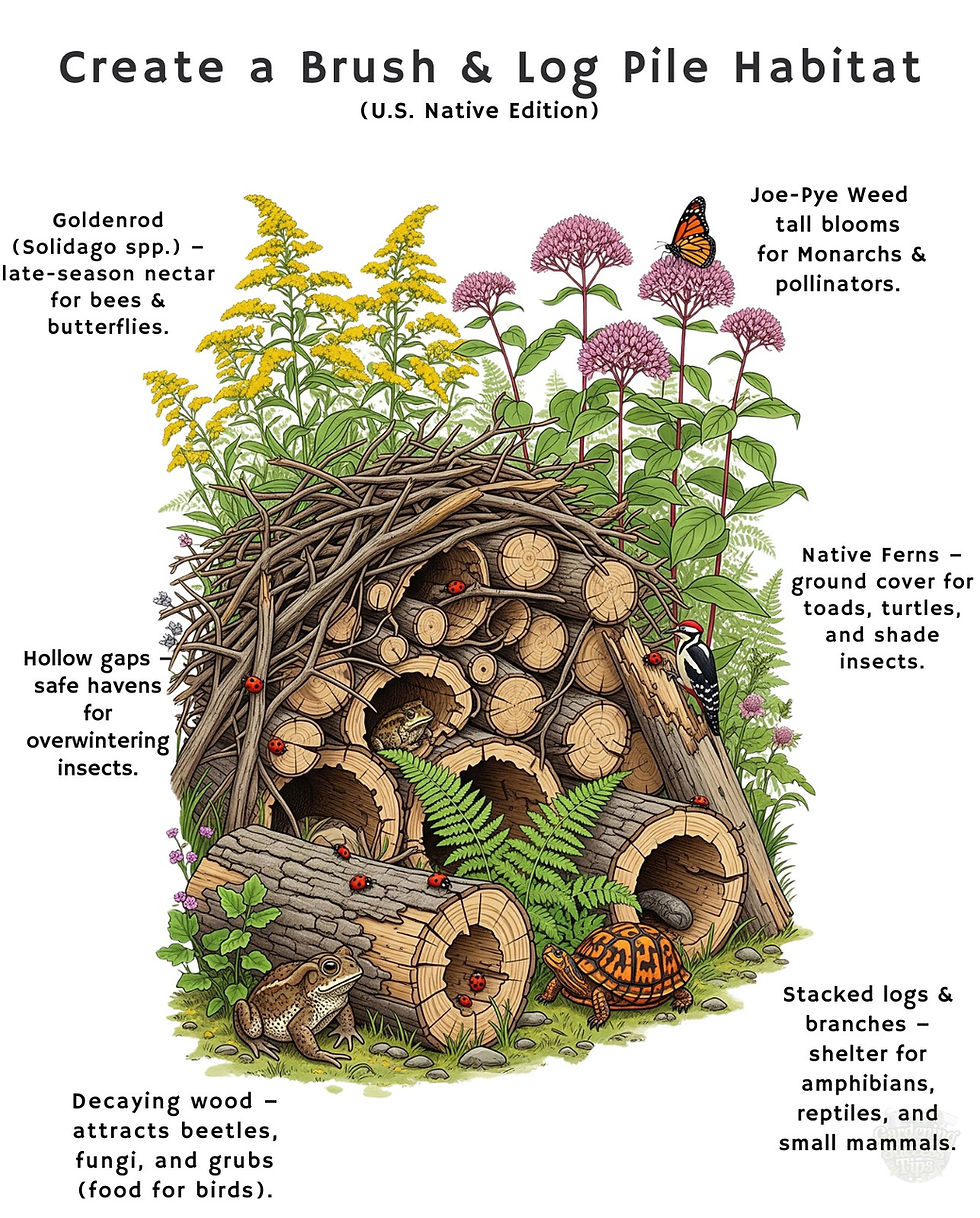How to Get Your Yard Ready for the Big Pollinator Sleep Over
- David Burrows

- Sep 22
- 3 min read

After the spring and summer months, the most critical time for pollinators begins. Even though flowers and leaves are fading and falling, fall and winter are precarious times for bees, butterflies, other insects. We often think of the months of September, October and November as “off-season”, many species are still foraging, nesting, or preparing to overwinter and hibernate. The choices we make in our yards now can give our friendly species a huge boost come spring. Here are some of the best ways to prepare:
🍂 Fall Prep (September–November)
1. Leave the leaves.
• Many butterflies, moths, and solitary bees overwinter in leaf litter. Instead of bagging them, rake leaves into garden beds or use them as mulch. Plus, decaying organic material helps to warm the area and protect hibernating species. You can even stack a pile of wood, twigs, and left over broken limbs to create a "dead hedge" for pollinator habitat.

2. Stop deadheading late-bloomers.
• Leave seed heads from coneflowers, black-eyed Susans, and sunflowers. They provide food for birds and cover for insects. These also fall to the ground and create more wildflowers for the next spring.
3. Plant fall nectar sources.
• Pollinators need late-season energy before winter. Goldenrod, asters, sedum, and native sunflowers bloom into fall and keep bees and butterflies fed. Also, Zinnas and most herbs may have time to bloom, plus provide you with some great "herbs de provence" for the holidays.
4. Prep soil for next season’s natives.
• Many native wildflower seeds require “cold stratification.” Sow them now so they naturally go through winter and germinate in spring. Check your specific zone for planting times and don't worry about covering them with dirt, nature takes care of that!

❄️ Winter Prep (December–February)
5. Skip “clean-up.”
• Hollow stems of plants like joe-pye weed, milkweed, and elderberry provide winter shelter for native bees. Cut them only in late spring, if at all.
6. Provide brush and log piles.
• Dead wood is prime habitat for beetles, bumblebee queens, and cavity-nesting insects.
7. Offer water—even in cold weather.
• On mild winter days, bees sometimes emerge. A shallow dish with stones can be a safe water source.

8. Reduce lawn area.
• If you’re planning landscaping changes, winter is a great time to sheet-mulch (cover with cardboard and compost) parts of the lawn to prepare new pollinator beds for spring. Get creative and use nature as a pallet to make a seasonal art gallery of native plants.
🌱 Big Picture Tips
• Avoid pesticides year-round. Residues can persist in soil and plant material.
• Choose native plants. They match the life cycles of local pollinators best.
• Think layers. Trees, shrubs, perennials, and ground cover all provide different niches for different species.
Let's run through a "Seasonal Pollinator Yard Prep Checklist", shall we?
🐝 Seasonal Yard Prep for Pollinators
🍂 Fall (Sept–Nov)
✅ Leave the Leaves – Rake them into beds, don’t bag them. Provides winter shelter for butterflies, moths, and bees.
✅ Keep Seed Heads – Leave coneflowers, sunflowers, and black-eyed Susans standing for bird food & insect cover.
✅ Plant Fall Bloomers – Goldenrod, asters, sedum, and native sunflowers provide late nectar.
✅ Sow Native Wildflower Seeds – Many need cold stratification (winter exposure) to germinate in spring.
✅ Cut Back Less – Only trim where necessary for safety; otherwise, let perennials stand.
❄️ Winter (Dec–Feb)
✅ Skip Garden “Cleanup” – Hollow stems and dead stalks are homes for overwintering bees and insects.
✅ Build Brush & Log Piles – Great for bumblebee queens, beetles, and cavity-nesting pollinators.
✅ Provide Water on Warm Days – Shallow dish with pebbles for safe access.
✅ Plan for Spring – Sheet-mulch lawn areas now to convert to native plant beds later.
✅ Avoid Pesticides & Herbicides – Residues linger and harm pollinators waking early.
🌱 Year-Round Big Picture
• Choose native plants for your region.
• Provide continuous blooms from early spring to late fall.
• Think in layers (trees, shrubs, perennials, groundcover).
• Keep part of your yard a little “wild.” Find helpful pollination solutions in our online store! Every purchase helps us do more to protect pollinators and plant more native wildflowers and grasses!



Comments